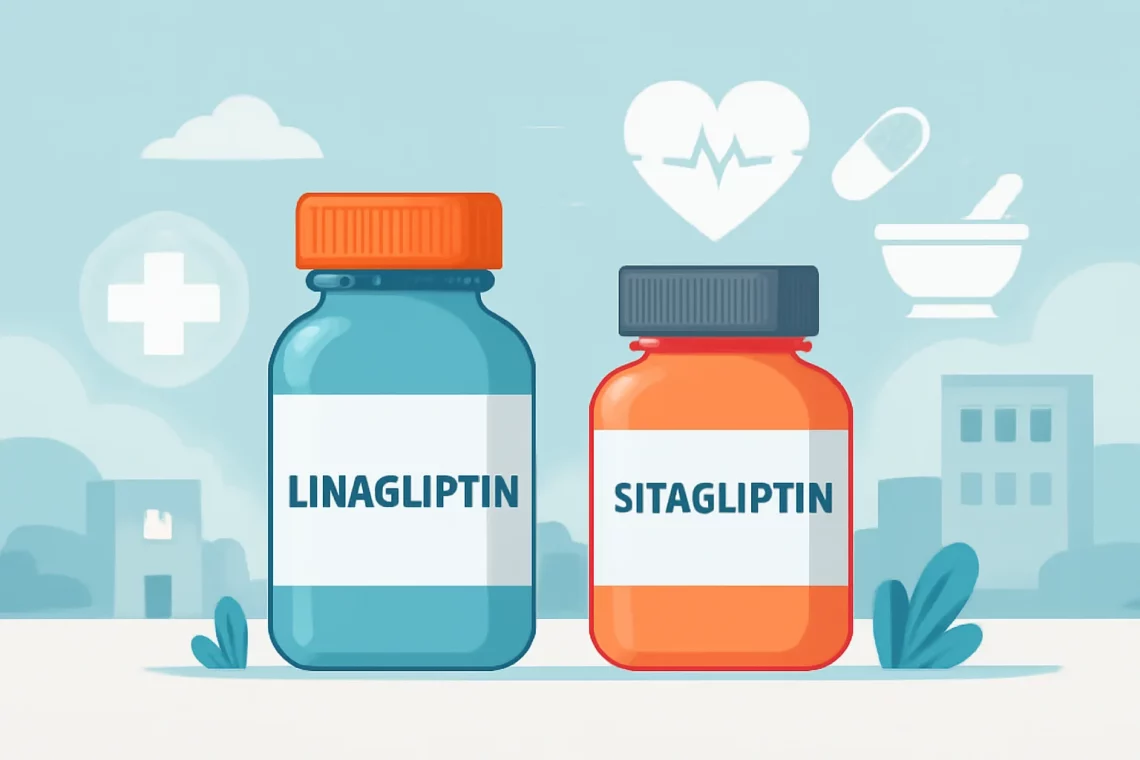-
Ciprofloxacin vs Cipro: Understanding the Differences and Uses
Ciprofloxacin and Cipro are terms that often create confusion among patients and healthcare providers alike. Understanding the nuances between these two can significantly impact treatment outcomes. Ciprofloxacin is a broad-spectrum antibiotic belonging to the fluoroquinolone class, widely utilized for treating various bacterial infections. It works by inhibiting bacterial DNA gyrase, a vital enzyme necessary for DNA replication and repair, thereby effectively stopping bacterial growth. Cipro, on the other hand, is simply a brand name for ciprofloxacin. While the two terms are often used interchangeably, it’s essential to recognize that Cipro represents a specific formulation of the active ingredient ciprofloxacin. Brand names like Cipro may also include other inactive components that…
-
Ativan vs Buspar: Comparing Anxiety Medications and Their Effects
Ativan and Buspar are two medications commonly prescribed for anxiety and related disorders. While they are both used to alleviate symptoms of anxiety, they belong to different classes of drugs and have distinct mechanisms of action, side effects, and usage considerations. Understanding the differences between these two medications can help patients make informed decisions about their treatment options. Ativan, known generically as lorazepam, is a benzodiazepine that works by enhancing the effects of a neurotransmitter called gamma-aminobutyric acid (GABA) in the brain. This results in a calming effect, which can help reduce feelings of anxiety and promote relaxation. On the other hand, Buspar, or buspirone, is an anxiolytic that does…
-
Clindamycin vs Bactrim: Choosing the Right Antibiotic for You
Clindamycin and Bactrim are two commonly prescribed antibiotics that serve important roles in the treatment of various bacterial infections. Both medications are effective but differ in their mechanisms of action, spectrum of activity, and potential side effects. Understanding these differences is essential for both healthcare providers and patients to make informed decisions about treatment options. Antibiotics like Clindamycin and Bactrim are vital tools in modern medicine, addressing infections that can range from mild to life-threatening. They work by targeting bacterial cells, either killing the bacteria or inhibiting their growth. However, with the rise of antibiotic resistance, the careful selection of the appropriate antibiotic is crucial. Factors such as the type…
-
Ciprofloxacin vs Bactrim: Choosing the Right Antibiotic for You
Ciprofloxacin and Bactrim are two widely used antibiotics that play a crucial role in the treatment of various bacterial infections. As antibiotic resistance becomes a growing concern, understanding the mechanisms, effectiveness, and potential side effects of these medications is essential for informed healthcare decisions. Each antibiotic has its own unique profile, making it suitable for different types of infections and patient conditions. Ciprofloxacin, a fluoroquinolone antibiotic, works by inhibiting bacterial DNA gyrase, which is vital for bacterial replication. On the other hand, Bactrim, a combination of sulfamethoxazole and trimethoprim, disrupts the bacterial folic acid synthesis, thereby hindering bacterial growth. The choice between these two antibiotics often depends on the specific…
-
Cyclobenzaprine vs Baclofen: Which Muscle Relaxant is Right for You?
Muscle relaxants are widely used to alleviate discomfort and facilitate recovery in various musculoskeletal conditions. Among the many options available, cyclobenzaprine and baclofen are two medications that often come up in discussions regarding effective muscle relaxation therapies. Each of these drugs possesses unique properties, and understanding their differences, uses, and potential side effects can help patients and healthcare providers make informed decisions. As more individuals seek relief from muscle spasms and pain, it is crucial to explore the mechanisms of action, indications, and contraindications of these medications. While both cyclobenzaprine and baclofen can provide significant benefits, their distinct pharmacological profiles mean they may be better suited for different patient populations…
-
Naproxen vs Anaprox: Key Differences and Similarities Explained
Naproxen and Anaprox are both nonsteroidal anti-inflammatory drugs (NSAIDs) primarily used to relieve pain and reduce inflammation. While they share a common active ingredient, their formulations and specific uses can differ. Understanding the nuances between these two medications is crucial for patients and healthcare providers alike. The choice between them can depend on several factors including the specific condition being treated, the desired duration of pain relief, and individual patient response. As we navigate the complexities of pain management, it’s essential to gain a comprehensive understanding of how these medications function, their potential side effects, and the circumstances under which one might be preferred over the other. The need for…
-
Linagliptin vs Sitagliptin: Which Diabetes Medication is Right for You?
Managing diabetes is a complex challenge that requires a multifaceted approach, including lifestyle modifications and, often, medication. Among the various pharmaceuticals designed to help control blood sugar levels, Linagliptin and Sitagliptin have emerged as popular options. Both belong to a class of medications known as DPP-4 inhibitors, which work by enhancing the body’s natural ability to lower blood sugar. As diabetes continues to affect millions worldwide, understanding the differences, benefits, and drawbacks of these medications is crucial for individuals looking to manage their condition effectively. While both Linagliptin and Sitagliptin share similar mechanisms of action, they also have unique properties that may influence a patient’s choice between the two. Factors…
-
Meloxicam vs Diclofenac: Which Pain Reliever is Right for You?
Meloxicam and diclofenac are both nonsteroidal anti-inflammatory drugs (NSAIDs) that play a significant role in managing pain and inflammation. These medications are frequently prescribed for various conditions, including arthritis, musculoskeletal pain, and post-surgical discomfort. While they share similar properties, their mechanisms of action, efficacy, and side effects can vary considerably. Understanding the differences and similarities between meloxicam and diclofenac can help patients and healthcare providers make informed decisions regarding pain management strategies. As the demand for effective pain relief continues to rise, it becomes crucial to evaluate the options available. Patients often seek alternatives to traditional pain medications due to concerns about side effects, dependency, or effectiveness. Both meloxicam and…
-
Adderall vs Mydayis: Which ADHD Medication is Right for You?
Adderall and Mydayis are two commonly prescribed medications used to treat Attention Deficit Hyperactivity Disorder (ADHD). Both of these stimulant medications aim to enhance concentration, reduce impulsivity, and improve overall cognitive function for those diagnosed with ADHD. However, despite their similar purposes, they differ in various aspects, including their composition, duration of action, side effects, and the way they are metabolized in the body. Understanding these differences can help patients and caregivers make informed decisions about which medication might be more suitable for their specific needs. As the prevalence of ADHD continues to rise, so does the importance of effective treatment options. Patients often seek medications that not only alleviate…
-
Gemtesa vs Detrol: A Comprehensive Comparison of Urinary Medications
Gemtesa and Detrol are two medications that have gained attention for their roles in managing urinary conditions, particularly overactive bladder (OAB). With an increasing number of individuals experiencing symptoms such as urgency, frequency, and incontinence, understanding the available treatment options becomes crucial. Both Gemtesa and Detrol are designed to alleviate these symptoms, yet they operate through different mechanisms and may suit different patient profiles. As the healthcare landscape continues to evolve, patients and healthcare providers are increasingly seeking effective solutions to enhance quality of life. The choice between Gemtesa and Detrol can be influenced by various factors, including the severity of symptoms, potential side effects, and individual health considerations. This…







































